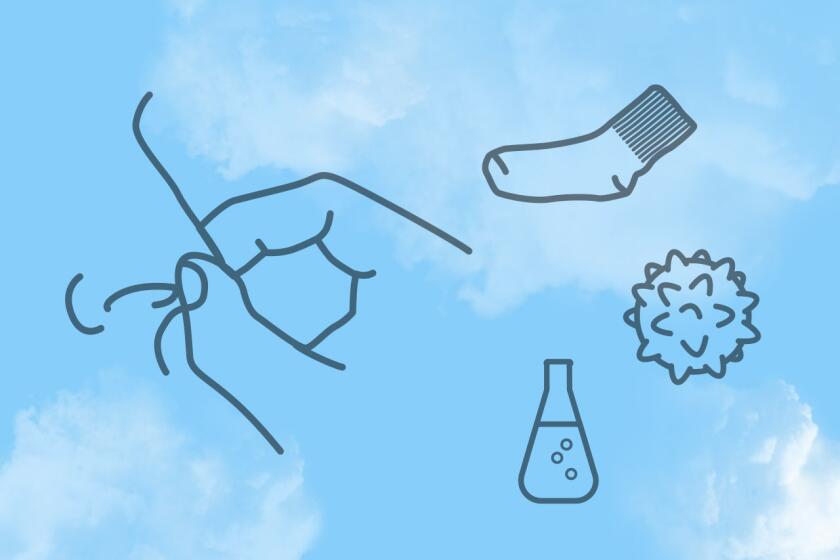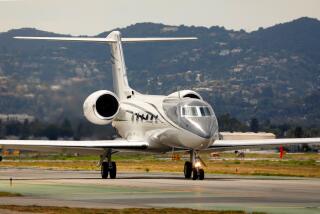How we investigated toxic chemicals on airplanes
- Share via
For decades, the airline industry and its regulators have known about incidents of toxic gases from jet engine oil and other fluids leaking into the air supply on planes. But the Federal Aviation Administration doesn’t track these fume events. And airlines aren’t required to report information needed to answer basic questions: How many fume events are there? How often are crew members and passengers sickened by fumes? How many pilots have been impaired by fumes, potentially endangering everyone on board?
To answer those questions, The Times first turned to a database of safety reports voluntarily made to NASA by pilots and flight attendants. NASA does not identify which reports involve a fume event, so the newspaper’s first step was to identify ones classified in the database as involving either “smoke/fire/fumes/odor” or an “illness” on a commercial plane. Those included more than 900 incidents from January 2018 to December 2019.
Read the investigation
The Times modeled its analysis of those reports after methodologies used in academic and government studies of fume events. The newspaper counted incidents in which reports used terms such as “fume event”; described smells in language the airline industry uses to identify fume events, such as “dirty socks smell” or “acrid”; noted mechanical findings, such as a leaky seal, that confirmed air supply contamination or procedures completed by mechanics to decontaminate the air supply; or described smells and physiological symptoms consistent with exposure to toxic fumes based on an FAA-funded guide for treating fume event-related health problems. Incidents were not counted if electrical or fan malfunctions were the suspected cause of fumes, or if there wasn’t enough information to make a determination.
As NASA safety reports are made voluntarily, the information is limited to whatever crew members decide to include in their narratives. The Times used a conservative count of people who received medical attention after fume events. For example, if a report noted that an unspecified number of passengers were treated by paramedics, The Times counted that as two. To calculate the number of times pilots were impaired by fumes, the newspaper included cases in which a report mentioned a pilot suffering partial incapacitation during flight; handing off the controls to a copilot after becoming unfit; or declaring themselves unable to complete scheduled flights following exposure to fumes. Dizzy or confused pilots were not counted as impaired unless a report explicitly stated they were unable to perform their duties.
Want to see if your flight passes the smell test? Here’s a quick guide based on industry sources.
The Times’ analysis of NASA safety reports alone counted 362 fume events reported in 2018 and 2019, nearly 400 crew members or passengers who received medical attention and four dozen pilots who were described as impaired to the point of being unable to perform their duties.
The safety reports are anonymized and do not contain airline names or flight numbers. NASA would not provide identifying information about incidents in its Aviation Safety Reporting System. In a handful of cases, The Times was able to cross-check public records, social media, local news coverage and other sources to identify incidents described in NASA reports.
The Times also filed hundreds of public records requests to identify fume events and determine whether passengers or crew were sickened. The newspaper reviewed two types of mechanical reports that airlines make to the FAA: Mechanical Interruption Summary reports and Service Difficulty Reports. Additional fume events were identified from internal airline mechanical records The Times obtained from sources. Paramedic reports requested from airports helped determine what symptoms were reported and whether medical attention was administered.
The Times spoke with several airline and academic experts in conducting its analysis. Guidance on identifying fume events was provided by an experienced pilot and airline mechanic who reviewed aviation records.
While reporting this series of articles, The Times reviewed thousands of pages of court filings from workers’ compensation cases and litigation against airlines and manufacturers. Much of the Boeing reporting was based on a cache of depositions and exhibits from recent lawsuits filed by flight attendants against the company. Additionally, The Times obtained internal airline documents used by pilots and mechanics when dealing with fume events. The newspaper interviewed dozens of people for this story, including pilots, flight attendants, mechanics, union officials, academic experts and medical professionals.
More to Read
Sign up for Essential California
The most important California stories and recommendations in your inbox every morning.
You may occasionally receive promotional content from the Los Angeles Times.















